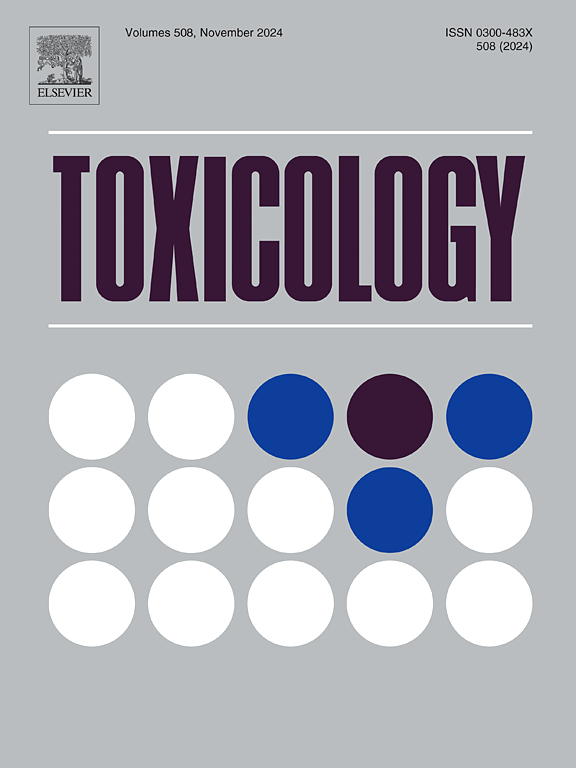Computerized predictive approaches of genotoxicity and mutagenesis in 3D Hepoid of normal and transformed human hepatocytes
IF 4.6
3区 医学
Q1 PHARMACOLOGY & PHARMACY
引用次数: 0
Abstract
The low specificity of standard in vitro genotoxicity tests in mammalian cells continues to necessitate animal experimentation, raising ethical concerns that conflict with the principles of the 3Rs (Replacement, Reduction, and Refinement). This underscores the urgent need for reliable alternative in vitro assays. Given the liver's critical role in xenobiotic detoxification and bioactivation, we developed an advanced 3D in vitro model of human hepatocytes that supports the proliferation and long-term differentiation of primary human hepatocytes and HepaRG cells. Using a range of methodologies, including the γH2AX assay, the comet assay, the micronucleus test, and transcriptomic analysis, we investigated DNA damage induced by well-known genotoxic carcinogens such as methylmethane sulfonate (MMS), mitomycin C (MMC), colchicine, vinblastine, 1,2-dimethylhydrazine (DMH), and aflatoxin B1 (AFB1), as well as non-genotoxic carcinogens, including di-2-ethylhexyl phthalate (DEHP) and methylcarbamate. Our data demonstrate the reliability of the 3D human hepatocyte Hepoid model in replicating in vivo results. We effectively discriminated between genotoxic and non-genotoxic carcinogenic molecules using complementary methods analyzed with advanced computational approaches. We further studied the in vitro genotoxic potential of four main Heterocyclic Aromatic Amines (HAAs) including 2-amino-9H-pyrido[2,3-b]indole (AαC), 2-amino-3-methylimidazo[4,5-f]quinoline (IQ), 2- amino-3,8-dimethylimidazo[4,5-f]quinoxaline (MeIQx) and 2-amino-1-methyl-6-phenylimidazo[4,5-b]pyridine (PhIP), which are food-borne and environmental contaminants suspected to contribute to hepatocellular carcinoma. Our results validate the Hepoid model as a reliable in vitro system for assessing the genotoxic and mutagenic risks of chemicals and confirm the ability of HAAs to induce DNA damage in a highly differentiated human liver model.
正常和转化人肝细胞三维Hepoid基因毒性和诱变的计算机预测方法。
在哺乳动物细胞中进行标准体外遗传毒性试验的低特异性仍然需要进行动物实验,这引起了与3r原则(替代、减少和改进)相冲突的伦理问题。这强调了迫切需要可靠的替代体外测定法。鉴于肝脏在外源解毒和生物活化中的关键作用,我们开发了一种先进的人类肝细胞体外3D模型,该模型支持原代人肝细胞和HepaRG细胞的增殖和长期分化。采用一系列方法,包括γ - h2ax测定、彗星测定、微核试验和转录组学分析,我们研究了众所周知的遗传毒性致癌物,如甲基甲烷磺酸盐(MMS)、丝裂霉素C (MMC)、秋水仙碱、vinblastine、1,2-二甲基肼(DMH)和黄曲霉毒素B1 (AFB1),以及非遗传毒性致癌物,包括邻苯二甲酸二乙己酯(DEHP)和氨基甲酸酯。我们的数据证明了3D人肝细胞Hepoid模型在体内复制结果的可靠性。我们利用先进的计算方法分析的互补方法,有效地区分了遗传毒性和非遗传毒性致癌分子。我们进一步研究了四种主要的杂环芳香胺(HAAs)的体外遗传毒性,包括2-氨基- 9h -吡啶[2,3-b]吲哚(AαC)、2-氨基-3-甲基咪唑[4,5-f]喹啉(IQ)、2-氨基-3,8-二甲基咪唑[4,5-f]喹诺啉(MeIQx)和2-氨基-1-甲基-6-苯咪唑[4,5-b]吡啶(PhIP),这四种被怀疑是导致肝细胞癌的食源性和环境污染物。我们的研究结果验证了heoid模型是一种可靠的体外系统,用于评估化学物质的遗传毒性和诱变风险,并证实了HAAs在高度分化的人肝脏模型中诱导DNA损伤的能力。
本文章由计算机程序翻译,如有差异,请以英文原文为准。
求助全文
约1分钟内获得全文
求助全文
来源期刊

Toxicology
医学-毒理学
CiteScore
7.80
自引率
4.40%
发文量
222
审稿时长
23 days
期刊介绍:
Toxicology is an international, peer-reviewed journal that publishes only the highest quality original scientific research and critical reviews describing hypothesis-based investigations into mechanisms of toxicity associated with exposures to xenobiotic chemicals, particularly as it relates to human health. In this respect "mechanisms" is defined on both the macro (e.g. physiological, biological, kinetic, species, sex, etc.) and molecular (genomic, transcriptomic, metabolic, etc.) scale. Emphasis is placed on findings that identify novel hazards and that can be extrapolated to exposures and mechanisms that are relevant to estimating human risk. Toxicology also publishes brief communications, personal commentaries and opinion articles, as well as concise expert reviews on contemporary topics. All research and review articles published in Toxicology are subject to rigorous peer review. Authors are asked to contact the Editor-in-Chief prior to submitting review articles or commentaries for consideration for publication in Toxicology.
 求助内容:
求助内容: 应助结果提醒方式:
应助结果提醒方式:


